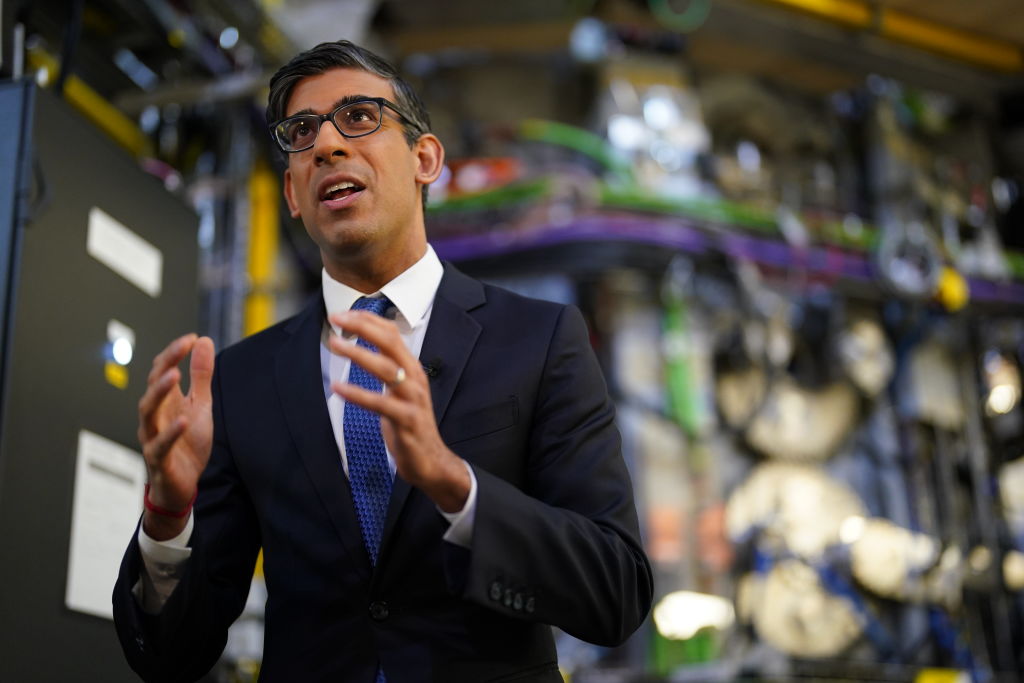Yesterday’s announcement that the UK has joined the Comprehensive and Progressive Trans-Pacific Partnership brought with it a unique sense of unity within the Conservative party, with very different Tory factions praising the new trade bloc. But yesterday is behind us. Now it’s back to business as usual.
Today ushers in the corporation tax hikes that Rishi Sunak first announced as chancellor back in 2021. The rise – from 19 per cent to 25 per cent for the largest companies – is, if anything, more divisive today than it was two years ago, as the decision was fiercely debated during the leadership election last year and then scrapped by Liz Truss – only to be reinstated weeks later by now-chancellor Jeremy Hunt.
I find this debate more interesting than most because it’s not your normal political clash: there is a genuine battle of ideas taking place over this hike, which is summed up in this graph from the Spectator’s Data Hub below.
Until recently, Tory party policy on corporation tax was focused on the blue and red lines in this graph, and the fervent belief that they have an inverse relationship. When George Osborne announced as chancellor back in 2010 that he was going to start slashing the UK’s corporation tax rate – ultimately taking the headline rate from 28 per cent down to 19 per cent – he did so based on the assumption that as rates fell revenue might actually rise. And it did. In fact, it nearly doubled, from £34bn to roughly £60bn. Employment shot up, too.
Osborne’s embrace of the Laffer Curve (that the optimal tax rate to bring in revenue is not always the higher figure) became settled science within the Tory party during the 2010s, and arguably one of their biggest achievements, especially on tax. Not only had they managed to implement a big headline tax cut for business, but they seemingly proved that doing so did not mean less for the Treasury’s coffers. This continues to be the perspective of plenty in the party, including the Trussite wing. Liz Truss’s argument for keeping corporation tax at 19 per cent was not simply that lower taxes are inherently good, but also that hiking corporation tax risks losing out on revenue as businesses change their behaviour.
But Rishi Sunak has never been convinced. For the once-chancellor and now prime minister, hiking corporation tax is one of the few policies that is less driven by paying for the pandemic or proving fiscal prudence, but rather one that he thinks needs correcting due to misinterpretation of the data.
For Sunak, the line on that graph he is most interested in is the yellow one: business investment. Yes, revenues were rising as corporation tax was falling, but business investment was on the up, too – and mirrors rising revenues. It’s investment that Sunak thinks has the closer relationship to revenue, not the tax cuts.
Using the carrot-and-stick method to try to get businesses to invest more has been a reoccuring theme during Sunak’s time in Cabinet. When he brought in the windfall tax on oil and gas companies last year – taking their overall corporation tax rate to a staggering 65 per cent – he also brought in a new 80 per cent Investment Allowance, which allowed companies to offset most of the windfall tax if they invested the money instead.
But the biggest changes were announced last month in Hunt’s March Budget. While corporation tax is still going up, the pair have brought in a policy of ‘full expensing’ to replace the ‘super-deduction’ designed in the pandemic, which will allow businesses to deduct their investments into the company from their tax bill straight away. The government is selling the policy today as ‘the most generous capital allowance regime in the OECD worth £27bn over the next three years.’ This is what Sunak believes will ensure that the red line continues to drift upwards.
What’s particularly exciting about this debate isn’t just that it’s based on real policy disagreement, but that at some point, someone is likely to be proven right. Or right-ish. There are always external factors that complicate data (say, right now, Joe Biden’s attempt to woo European renewables to US shores with major subsidies and giveaways). And there are counterfactuals we’ll never know: what if Sunak had kept the rate at 19 per cent and introduced full expensing? It’s reasonable to think both the tax rate and business investment play a role in how much tax revenue is produced.
But different camps of the Tory party firmly believe they have discovered what correlates to higher tax revenue – and they’ve come up with two different answers. And it’s likely in a few years time, we’ll be able to compare the corporation tax policy of the 2010s to the new corporation tax policy of the 2020s – and perhaps even declare a winner.







Comments